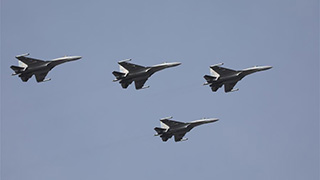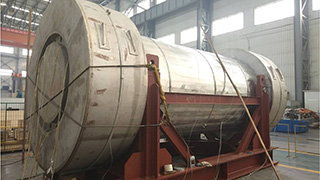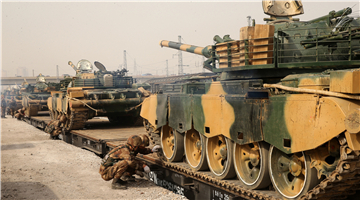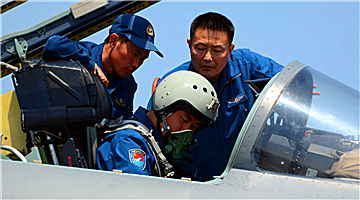The Air Force of the Chinese People’s Liberation Army (PLA) stationed in Susong County, eastern China’s Anhui Province, issued a notice jointly with local government on Feb. 27: the PLA Air Force will conduct the 182-day high altitude live-ammunition training in the target area of Daguan Lake from Mar. 3 to Aug. 31, 2018.
The live-fire training will be mainly conducted in two areas, namely, an area with a radius of 3 kilometers centered on the Huangjinzui Target, and another area with a radius of 3 kilometers centered on the Kingjiazui Target, according to the notice.
This long live-fire training has recently caused relatively strong reaction near the target areas. Some local residents thought that an earthquake had occurred. The earthquake authorities in Huangmei County of Hubei Province near the target areas quickly debunked the earthquake rumors.
It is quite rare for the PLA Air Force to use live ammunition to conduct round-the-clock ground-attack training for as long as 182 days.
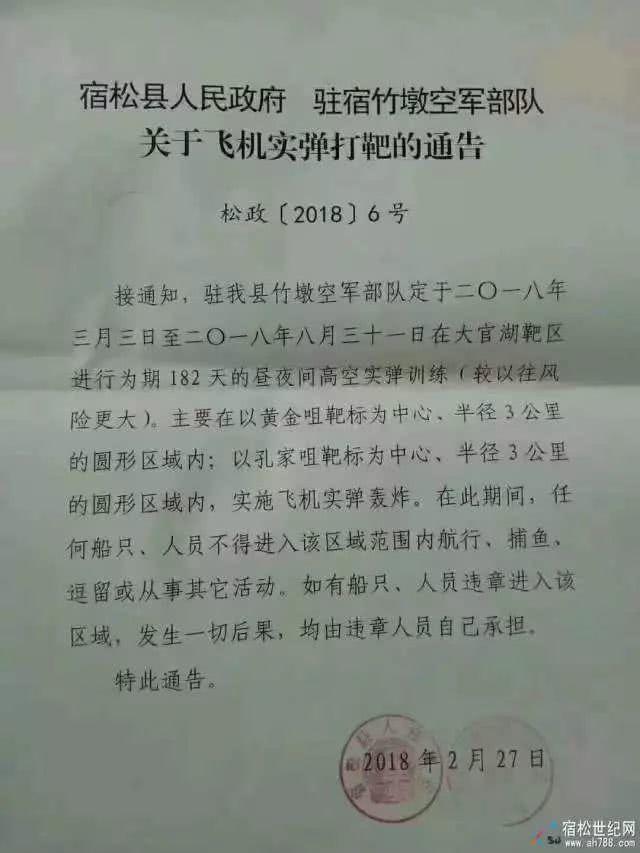
Susong County is located in the southwest of Anhui Province.
In terms of topography and geomorphology, the terrain of mountains, hills, lakes and plains in Susong gradually decreases from northwest to southeast. The topographical features in Susong County are very representative of the eastern part of China and cover most of the landforms.
Such geographical features are the reason the PLA Air Force selected this area as a shooting range. When fighter jets conduct ground-attack training, they can find target through the mountains and attack targets hidden in both mountains and waters. It is very practical to train pilots to fly at low and ultra-low altitudes in undulating terrain conditions.
The notice indicates that the 182-day live-fire training is to test one bombing skill: day and night high-altitude bombing. This bombing tactic was very common during the World War II but it is relatively rare in modern times.
In the era of anti-aircraft canons and machine guns, bombers need to be able to stay out of the range of guns to improve their survivability. After the missile became the mainstream air defense weapon, the fighter jets and bombers could no longer avoid attacks merely by increasing bombing height. Therefore, in modern air raids, fighter jets loaded with precision-guided weapons are required to launch attacks outside the range of the anti-aircraft missiles.
However, the nowadays' air forces of various countries do not abandon the traditional tactics of high-altitude bombing. Precision-guided weapons are generally expensive and therefore they are suitable for implementing point-type destruction of important nodal targets on the ground.
After eradicating ground targets such as ground-based air defense radars, weapons, and communications command centers, there will be important targets such as airports, troops, armored fighting vehicles and logistics supply areas. In this way, high-altitude bombing tactics based on unguided bombs (commonly known as "iron bombs") still have good effect on eradicating these surface targets.
Bombers that throw iron bombs in a large scale are very common. For example, the Russian Tu-22M3 bombers hit ground targets in Syria in recent years, and the US B-1 and B-52 bombers earlier bombed targets in Afghanistan, Iraq and other places. The air forces of many countries will not ease the training on bombing tactics at high altitude until the price of guided bombs falls to the same level as that of iron bombs.
The Chinese Air Force is currently equipped with the H-6K and H-6M bombers, Su-30MKK, and J-16 multipurpose fighter jets, and JH-7 fighter bombers and other ground attack aircraft. Almost all active fighter jets of the PLA Air Force have the capability to mount and drop iron bombs. Therefore, the live-fire bombing training is expected to be based primarily on professional bombers and attack aircraft. However, it is also possible that multi-purpose fighter jets or even fighters will participate in the drill.
The round-the-clock training of pilots’ high-altitude bombing capabilities aims to shore up their weak spots. For a long time, homeland air defense has been the main task of the Chinese Air Force. The focus has been on air combat capability that seizes air supremacy and less emphasis has been placed on the offensive capabilities of ground attacks.
After the strategic requirement of building air-space capabilities and conducting offensive and defensive operations and the establishment of a new strategic air force, more and more attention has been given to offensive tactics such as the ability to strike accurately with precision or large-scale bombing against land and sea targets.
As the main tactic in the second wave of air strikes after large-scale and accurate strikes against the ground, high-altitude iron bomb bombing will continue to be the normal training subject of various air forces in the world including the PLA Air Force for some time to come.
For the Chinese Air Force, more attention might be paid to training pilots' capability to drop iron bombs because its current guided bomb categories may prove not so abundant.
Disclaimer: The article is extracted from an article on ifeng.com and it is translated into English by the China Military Online. The information, ideas or opinions appearing in this article are those of the author from ifeng.com and do not reflect the views of eng.chinamil.com.cn. Chinamil.com.cn does not assume any responsibility or liability for the same. If the article carries photographs or images, we do not vouch for their authenticity.

